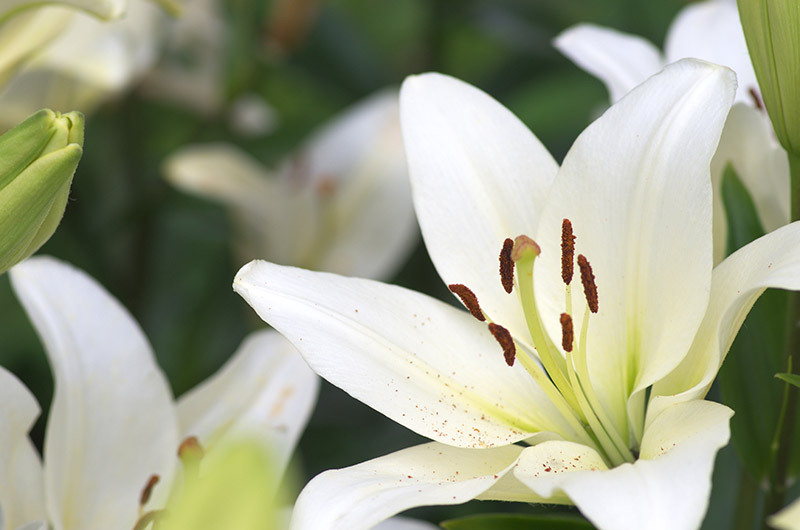Unlock the mystery: 7 surprising facts about tulips
Posted on 18/08/2025
Unlock the Mystery: 7 Surprising Facts About Tulips
With their dazzling colors and iconic cup shape, tulips stand as one of the world's most beloved spring blooms. But how much do you really know about these mysterious flowers? Today, we invite you to unlock the mystery behind tulips and discover 7 fascinating facts that will surprise even seasoned gardeners and flower enthusiasts!
1. Tulips Didn't Originate in the Netherlands
When most people think of tulips, images of the vast, rainbow-hued fields in the Netherlands often come to mind. However, the origin of tulips is far more intriguing. These iconic flowers actually hail from the rugged mountain slopes of Central Asia, particularly near the Tien Shan mountains. Wild tulips (species in the genus Tulipa) grew in places now known as Kazakhstan, Iran, and Afghanistan.
- Wild tulips flourished in climates with cold winters and hot, dry summers.
- They were likely first cultivated by the Turks, who prized them for their unique beauty.
- During the 16th century, tulip bulbs were sent from the Ottoman Empire to Europe, where they quickly enchanted the public.
So, while we associate the Dutch with tulips, their fascinating journey began thousands of miles to the east!

2. The Dutch Tulip Mania: The World's First Financial Bubble
The tulip's journey to Europe ignited not just horticultural fascination, but also a financial phenomenon. In the 1630s, the Netherlands experienced "Tulip Mania," a period when tulip bulbs became so coveted--and scarce--that they were worth more than gold.
- Rare tulip varieties fetched extraordinary prices. In some cases, a single bulb could buy an entire house!
- Tulip Mania is often cited as the world's first recorded financial bubble and subsequent crash.
- When prices finally collapsed in 1637, many investors were financially ruined.
Unlock the mystery of economic history, and you'll find the tulip at the heart of a cautionary tale about speculation and value.
3. Tulips Come in Every Color Except Blue
One of the most surprising facts about tulips is their astonishing diversity in color and form. Scientists and flower breeders have cultivated tulips in virtually every hue: red, yellow, orange, white, pink, purple, and even near-black shades like the famous 'Queen of Night' variety.
- No naturally occurring blue tulip has ever been discovered or bred, despite intense scientific effort.
- The blue pigment delphinidin is lacking in tulips, making true blue blooms impossible--at least for now.
- Hybridizers continue their quest, but the secret to creating a blue tulip remains elusive, adding to the enduring mystery of these flowers.
Rare and Unique Tulip Colors
- Black Tulips: Not truly black, but deep purple--often associated with mystery and elegance.
- Variegated Tulips: Boast stripes, flames, or feathered patterns due to past viral infections, which now add prized ornamental value.
Whether you prefer classic reds or daring multicolors, the dazzling palette of tulips offers something for every admirer.
4. Tulip Flowers Were Once Eaten
Perhaps one of the least expected--and most significant--facts about tulips is their role as a food source.
During World War II, especially during the 1944-1945 Dutch famine known as the "Hongerwinter," desperate civilians consumed tulip bulbs to survive.
- Tulip bulbs can be edible if correctly prepared, but some varieties are toxic if eaten raw.
- Locals boiled the bulbs, which have a flavor reminiscent of onions or potatoes, and ground them into flour for bread and pancakes.
- Today, eating tulip bulbs is discouraged outside of emergency situations, both for safety reasons and to preserve their beauty.
Unlocking the mystery of tulips reveals a poignant story of perseverance and survival in times of hardship.
5. There Are Over 3,000 Registered Tulip Varieties
If you think all tulips look the same, think again! Tulips are a remarkably diverse group of flowers. The Royal General Bulbgrowers' Association (KAVB) registers more than 3,000 varieties worldwide. These are divided into 15 groups based on flower shape, bloom time, and heritage.
Popular Tulip Groups:
- Single Early: Classic cup-shaped tulips that bloom in early spring.
- Double Late: Layers of petals resembling peonies.
- Fringed Tulips: Remarkable for their serrated petal edges.
- Parrot Tulips: Whimsical blooms with spectacular, feathery edges and bold streaks of color.
The variety and adaptability of tulips make them a favorite for gardens, bouquets, and landscaping projects around the globe.
6. Tulips Are a Universal Symbol of Love--and More
Besides their beauty, tulips hold deep cultural symbolism. They are most commonly associated with love and rebirth, making them popular gifts for romantic occasions and spring festivals.
- Red tulips symbolize passionate love.
- Yellow tulips once stood for hopeless love, but now often represent cheerful thoughts and sunshine.
- White tulips indicate forgiveness, purity, or remembrance.
- In Turkey and Persia, the tulip is a symbol of paradise on earth and perfect love, lending its name ("lale" in Turkish) to children.
The mystery of tulip symbolism has inspired poetry, art, and folklore across continents, proving that the influence of these blooms transcends borders.
7. Tulip Festivals: Global Celebrations of Spring
Unlock the magic of tulips each year at fabulous festivals celebrating the arrival of spring. These lively events attract tourists and horticulturists from all over the world, highlighting the importance of tulips in various cultures.
Notable Tulip Festivals
- Keukenhof Gardens (Netherlands): Featuring over 7 million tulips in bloom, it's the world's largest flower garden.
- Canadian Tulip Festival (Ottawa): A gift of tulip bulbs from the Dutch royal family to Canada inspired this annual event.
- Skagit Valley Tulip Festival (Washington, USA): Fields bursting with color draw more than a million visitors each spring.
Witnessing these vibrant displays is a breathtaking reminder of the universal allure and symbolic renewal that tulips represent every year.
Tulip Care and Fun Tips for Gardeners
Unlock the full potential of your own tulip display with these helpful tips:
- Planting Time: Plant tulip bulbs in autumn, about 6-8 weeks before the first hard frost.
- Location: Choose a spot with full or partial sun and well-drained soil.
- Spacing: Plant bulbs 4-6 inches apart and 6-8 inches deep for best results.
- Protection: Protect bulbs from rodents by using wire mesh or deterrents, as squirrels love to dig them up!
Pro Tip: For a longer display, choose tulips with staggered blooming times (early, midseason, late).
Whether you're tending a single pot or an entire landscape, understanding the secrets of tulips will unlock a new level of gardening joy.

Bonus: Fun and Lesser-Known Facts About Tulips
- The word "tulip" is derived from the Persian word "delband", meaning turban, because of the flower's resemblance to a turban.
- Some tulip bulbs weigh as much as a small apple!
- Tulip stems can actually continue to grow after being cut, sometimes elongating by up to an inch in a vase.
Unlocking the Mystery: Why Tulips Remain Fascinating
From their enigmatic origins in Asian mountains to their starring role in economic history and as the stars of spring celebrations, tulips continue to enchant with their beauty, symbolism, and storied past. Whether you're a gardener, a history buff, or simply a flower lover, these surprising facts about tulips reveal why these vibrant blossoms have captivated human hearts for centuries.
Unlock the mystery of tulips. Explore their history, marvel at their diversity, and enjoy their blooms for the ultimate springtime joy!
Frequently Asked Questions About Tulips
How do I keep tulip bulbs healthy for next year?
Remove spent flowers to prevent seed formation, let the leaves yellow naturally, and store bulbs in a cool, dry place before planting again in the fall.
Are tulips safe for pets?
Tulip bulbs are toxic to cats and dogs if ingested. Keep pets away from newly planted or stored bulbs.
Can tulips be grown indoors?
Yes! Try "forcing" tulip bulbs in pots by chilling them for 12-16 weeks before bringing them indoors for winter blooms. It's a surefire way to unlock the beauty of tulips all year long.
Ready to explore more flower mysteries? Stay tuned for more in-depth guides and fascinating discoveries about your favorite blooms!
Latest Posts
Red Roses on Valentine's Day: A Timeless Gesture
Explore 12 Flowers That Stand the Test of Time
Essential tips for extending the life of your cut flowers






